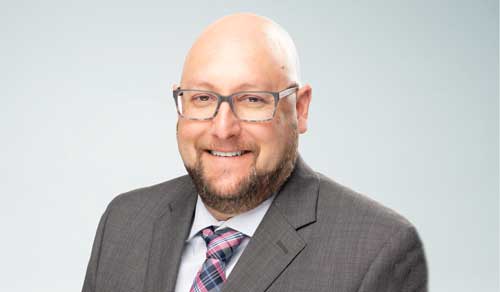“Reports that say that something hasn't happened are always interesting to me, because as we know, there are known knowns; there are things we know we know. We also know there are known unknowns; that is to say we know there are some things we do not know. But there are also unknown unknowns—the ones we don't know we don't know.”
This infamous, tongue-twisting statement was derided as incomprehensible when issued by then U.S. Secretary of Defense Donald Rumsfeld in 2002. Yet somehow, almost two decades later and in the midst of an unpredictable global pandemic, this word salad has attained a new relevance.
Evolution Accelerated
Life and health insurance underwriters in particular face an ever-evolving spectrum of what we know and don’t know. In addition to an incomplete understanding of the coronavirus itself – Will there be a second wave? Is the virus seasonal? What are the long-term health impacts? – social distancing and stay-at-home measures taken in response to the pandemic have limited traditional underwriting evidence. The known knowns derived from fluid testing and paramedical exams have been significantly reduced. Insurance sales driven to online distribution channels have further disrupted established information-gathering processes. Consider this: What good is ordering an attending physician statement (APS) when there is no one at the medical provider’s office to make copies? We simply don’t have the same evidence to assess risk that we had come to rely on.
The insurance industry’s ongoing evolution toward alternative data sources and fluidless underwriting has been forced to lurch awkwardly forward. The result is a climate of uncertainty and a mishmash of known and unknown. The good news is that underwriters are experts in tackling these sorts of problems. We are trained to evaluate the risk of the unknown based on our understanding of the known. We have already learned so much in the first few months of this pandemic and adapted our processes and guidelines accordingly. RGA’s Global Underwriting Manual, for example, has undergone continuous adjustments since the onset of the pandemic and added a dedicated COVID-19 section. I am confident the underwriting profession will overcome our current challenges as we have overcome challenges in the past.
Fraud: The Great Unknown?
Yet there remains a never completely knowable threat that seeks to undermine our collective efforts: insurance fraud. Uncertainty and instability brought on by abrupt change has created a breeding ground for fraud. New processes, unproven practices, and less reliable information create openings for fraudsters throughout the life of an insurance policy – from application to claims. For underwriters, the risk of fraud ranges from increased opportunities for anti-selection (How can we possibly know about every positive COVID-19 test?) to downright criminal behaviour.
Our best and only defense is vigilance and a commitment to moving the unknown into the known as much and as often as possible. Thorough gathering and analysis of evidence improves underwriting and reduces fraud. Below are several practical steps insurers can take right now to accomplish both of these outcomes in the wake of COVID-19.
General best practices:
- Similar to random holdouts done for accelerated cases, we suggest applying the same concept to cases where decisions were made without full age and amount requirements. APSes would be ordered on a specific percentage of this business after issue.
- Consider additional scrutiny when underwriting reinstatements specifically for business that was issued during the pandemic (especially when full age and amount requirements were waived).
- Consider declining or postponing when there is a lack of candor as it relates to travel, preexisting conditions and financial information including overstated income or unadmitted inforce coverage.
- Pay special attention to beneficiaries and insurable interest in beneficiaries, especially for older and high COVID-19 risk applicants, to determine if the case may be STOLI (stranger originated life insurance).
- Consider having a standard COVID-19 pre-screen questionnaire. (RGA can provide a sample questionnaire we developed – contact your RGA representative for additional information.)
- Request good health statements to be signed on delivery on all policies.
- Watch for signs of stacking of smaller policies to avoid full underwriting and avoidance of certain age and amount requirements such as labs, EKG, and examiner collected physician measurements.
Due diligence for sales not made face to face:
- Obtain copies of the applicant’s license and/or government issued ID such as a passport.
- Obtain signed statements from the agent advising any sale not made face to face and provide details of the alternative method used. We suggest also including a screen print of the conversation clearly identifying both users (agent and applicant).
- Applications should also provide the location where the applicant signed the signature. Be cautious of individuals who may be travelling/residing in foreign countries or vacationing on such things as cruise ships.
- Consider use of electronic signature programs such as DocuSign where the IP address can be traced to a location.
- Consider ordering a carrier or vendor telephone interview as well as part of the verification process.
Alternatives to exam and traditional blood and urine collection:
- Exam and lab companies are advising that it is business as usual for paramedical exams in most parts of the U.S. If an alternative to a paramed exam and fluid collection is being requested, we suggest that the company verify that there are no paramed options available, such as having the client visit a local exam office instead of a home visit.
- In situations where there are truly no alternatives for paramed exams and fluid collections, carefully consider your alternatives, such as a telephone inspection report where the medical questions are asked, oral fluid samples that include tests for nicotine and HIV, APSes, labs that may have been completed previously for another company, and labs that may have been completed for a recent physical (keep in mind that there may be tests missing, such as GGT, nicotine, or HIV).
Alternative to APSes:
- Prescription database check with Rx risk scoring.
- Applicant-provided “electronic health summaries” obtained through a provider’s web health portal. Take care to verify authentication. Be aware that pending or recent test results will often not show up on these reports until they are released by the treating physician or after a specific period of time has passed to allow the treating physician to communicate the results to the applicant. This includes COVID test results.
- Historical lab searching – either completed as part of an insurance application or for clinical use.
- Asking the applicant to request that the physician’s office release the records expeditiously.
- Impairment-specific questionnaires that can be used as addendums to the Part II.
Business trends to watch:
- Routinely watch for trends on social media. We have seen an increase in posts by agents and agencies asking for names of carriers that have temporarily loosened the underwriting requirements.
- Watch for trends suggesting an increase in applications from any agent or agencies, especially in areas where you may have temporarily reduced your age and amount requirements (age, face amounts, or product lines).
- Watch for swings in business by age and face amounts.
- Watch for sudden increases in specific product types, particularly limited-evidence products.
- Watch for potential of stacking either within your company or across multiple companies.
- Requests for face increases should be carefully reviewed and re-underwritten to verify no interim changes in health. This includes obtaining a current nonmedical Part II, current prescription database check and current MIB.
- Monitor for self-employed/business owners who may be financially stressed.
The challenges for insurers during the current crisis are numerous, but so are the steps we can take to better protect ourselves. With the right approach and a continuous effort, we can emerge from this pandemic as a stronger industry on the other side.



